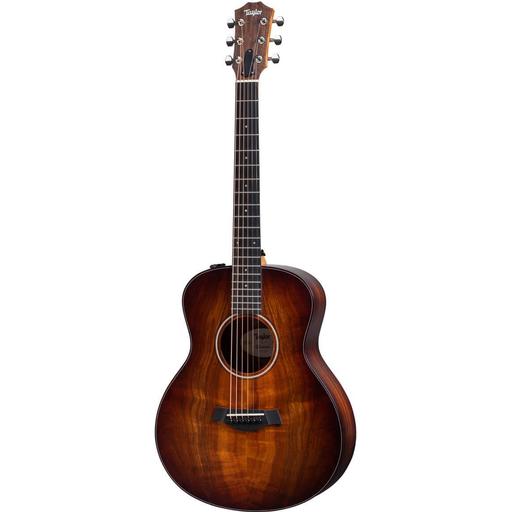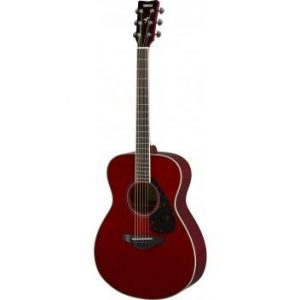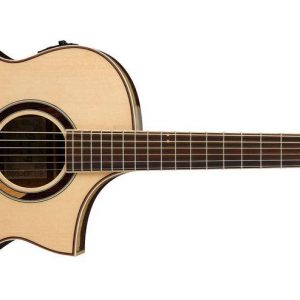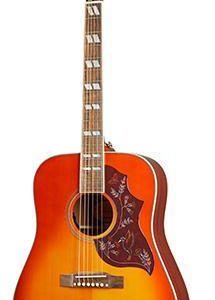Taylor GS Mini-e Koa Plus
$736.99
With the Taylor GS Mini-e Koa Plus, enjoy an acoustic guitar with a beautifully vibrant look, advanced Taylor electronics, and a comfortable playability that makes it perfect for beginners or experienced players.
Compare
Description
The Taylor GS Mini-e Koa Plus acoustic guitar is one of the most sought-after guitars in the market today. It is a compact and versatile guitar that is perfect for both beginners and professionals.
Firstly, let us look at the design of the Taylor GS Mini-e Koa Plus guitar. It has a beautiful solid Koa wood top, which is a rare and highly valued tropical hardwood. The back and sides are made of layered Koa wood, and the guitar has a satin finish, which gives it a smooth and elegant look.
When it comes to the sound quality of this guitar, it is simply exceptional. The solid Koa wood top produces a warm and balanced tone, which is perfect for both strumming and fingerpicking. The layered Koa wood back and sides add depth to the sound, and the guitar is equipped with Taylor’s Expression System 2 pickup, which accurately reproduces the guitar’s natural sound when amplified.
Playing the Taylor GS Mini-e Koa Plus is an absolute joy. Its compact size makes it easy to handle, and the neck is designed to provide maximum comfort and ease of play. The guitar is fitted with a Tusq nut and saddle, which contribute to its excellent intonation and sustain.
Apart from its exceptional sound quality and playability, the Taylor GS Mini-e Koa Plus also comes with top-notch features. It has a built-in tuner, which allows for easy and accurate tuning on stage or in the studio. The guitar also comes with a sturdy gig bag that provides excellent protection and makes it easy to carry around.
Overall, the Taylor GS Mini-e Koa Plus acoustic guitar is a top-of-the-line instrument that is worth every penny. Its beautiful design, exceptional sound quality, and advanced features make it stand out from the crowd. Whether you are a beginner or a professional guitarist, this guitar is a worthy investment that is sure to bring you years of musical inspiration and enjoyment.
Taylor GS Mini-e Koa Plus properties
| Product name |
Taylor GS Mini-e Koa Plus |
| Brand |
Taylor |
| Type |
Acoustic Guitars |
| Number of Strings |
6 pcs |
| Built-In Microphone |
Yes |
| Handedness |
Right-Handed |
| Number of Frets |
20 |
| Cutaway |
No Cutaway |
| Size |
4/4 |
| Pick Guard |
No |
| Wood Type (neck) |
Mahogany |
| Wood Type (fretboard) |
Ebony |
| Built-In Tuner |
Yes |
| Colour |
Brown |
Frequently Asked Questions:
How do I change the strings on my Taylor GS Mini-e Koa Plus acoustic guitar?
Changing the strings on your Taylor GS Mini-e Koa Plus acoustic guitar is a simple process. Follow these steps to replace the strings:
1. Prepare your workspace: Set up a clean, well-lit area with good ventilation where you can comfortably work on your guitar. You'll need a flat surface and a comfortable chair or stool. Gather all necessary tools and materials before starting.
2. Choose the right strings: Taylor recommends using Elixir Nanoweb 80/20 Phosphor Bronze Light strings (11-47) for this guitar model. However, you can use other brands if preferred.
3. Loosen the strings: Use a hex wrench or Allen key (usually included with the guitar) to loosen the tension on each string by turning the truss rod adjustment wheel located at the headstock. Turn it counterclockwise until the strings are slack enough to be removed easily. Be careful not to over-loosen the truss rod, as this can cause issues with the neck alignment.
4. Remove old strings: Carefully pull each string off its corresponding tuning peg by gently pulling down on the ball end of the string while holding the other end with your other hand. It's okay if some of the strings break or become damaged during removal; just make sure to remove all of them completely.
5. Install new strings: Begin at the bridge and work your way up towards the headstock. Thread one end of a new string through the corresponding hole in the saddle at the bridge, then bring it around to the front of the guitar and thread it through the tuning peg's hole on the headstock. Make sure the ball end is facing away from the headstock.
6. Wrap the strings: Wrap each string around its respective tuning peg in a clockwise direction (when viewing the guitar from the front). Aim for about 2-3 full wraps, ensuring that the winding is even and tight. It's essential not to overwind or cross the wraps over one another as this could lead to tuning instability and potential breakage.
7. Secure the strings: Once all strings are properly wound, gently pull each string towards the headstock until they are tight enough that there is no slack between the saddle and the tuning pegs. Use your hex wrench or Allen key to adjust the truss rod if necessary.
8. Tune your guitar: Using a digital tuner or an electronic tuning fork, tune each string to its corresponding note (E A D G B e). Start with the high E string and work your way down to the low E bass string.
9. Final check: Once all strings are tuned, give them a gentle pluck and listen for any irregularities or dead spots in the sound. If everything sounds good, your Taylor GS Mini-e Koa Plus acoustic guitar should now be ready for another round of playing!
What is the unique feature of the Taylor GS Mini-e Koa Plus acoustic guitar and how does it enhance its playing experience?
The Taylor GS Mini-e Koa Plus acoustic guitar sets itself apart from other models with its onboard ES2 electronics system. This advanced technology not only amplifies the guitar's natural sound but also provides exceptional clarity, sensitivity, and volume. The result is a richer and more immersive playing experience that captivates both performers and audiences alike. Whether you're playing in an intimate setting or on a large stage, the ES2 electronics ensure that every note is delivered with stunning detail and depth. With its exceptional build quality, smooth action, and exquisite Koa wood construction, the Taylor GS Mini-e Koa Plus is truly a guitarist's dream come true.
What is the optimal setup for string action and intonation on a freshly set up Taylor GS Mini-e Koa Plus to ensure proper playability and tone?
The Taylor GS Mini-e Koa Plus is an excellent instrument, known for its rich and balanced tone. To achieve optimal setup for string action and intonation, I recommend the following:
**String Action:**
1. Action Height:** For a comfortable playing experience, the action (string height) should be around 4/64" (1. E string and 3/64" (1. E string. Fretboard Radius:** With a radius of approximately 12-14 inches (30-35 cm), the GS Mini-e's fretboard is designed to be relatively flat, which suits most players' preferences. However, some may prefer a slightly flatter or more pronounced radius. Intonation:**
1. String Stretching:** Before adjusting intonation, make sure the strings are properly stretched and seated in the nut and bridge. This ensures accurate pitch and reduces the risk of intonation issues. Bridge Position:** The GS Mini-e's compact body design requires a slightly shorter scale length (22. To compensate for this, adjust the bridge position to ensure optimal string alignment with the fretboard. A general rule of thumb is to set the bridge so that the low E string's saddle is about 1/8" (3 mm) from the headstock. Nut and Bridge Compensation:** Due to the GS Mini-e's short scale, you may need to adjust the nut and bridge compensation slots to fine-tune intonation at different fret positions. Recommended Setup:**
For optimal playability and tone, I recommend the following string setup:
* Low E (E0): 0. A: 0. D: 0. G: 0. B: 0. High E (E5): 0. Action Adjustments:**
To achieve optimal action, adjust the bridge and nut as follows:
* Bridge:
+ Low E: 1/8" (3 mm) from headstock
+ A-D strings: even with the low E string's saddle
+ G-B strings: about 1/16" (1. E string's saddle
+ High E: about 1/32" (0. B string's saddle
* Nut:
+ Adjust the nut slots to allow for a slight "play-in" of the strings at the first fret. Intonation Fine-Tuning:**
Once you have set up your GS Mini-e, fine-tune the intonation by adjusting the bridge position and nut compensation slots. Use a digital tuner or a pitch pipe to check intonation accuracy across the fretboard. Keep in mind that every guitar is unique, and these recommendations may need adjustments based on individual preferences and playing styles.
Before you buy Taylor GS Mini-e Koa Plus










Aiden Cooke –
Ugh, you know what’s annoying? People always talking about the economy and how it’s going to affect our money. Like, can’t they just leave us alone? I mean, I’m trying to live my best life here in Lakewood, and then suddenly everyone’s freaking out about rate hikes in 2025 because of some jobs report. Give me a break.
Anyway, enough about that noise. I recently bought the Taylor GS Mini-e Koa Plus, and let me tell you, it’s been a game-changer. Not only does it look amazing (I mean, have you seen that beautiful koa wood?), but it also sounds incredible. I was skeptical at first because of its size, but this thing packs a punch.
One common problem people have with acoustic guitars is setting up the action (the distance between the strings and the fretboard). It’s a real pain to get just right, and if you’re not careful, you’ll end up with buzzes and rattles all over the place. But with the Taylor GS Mini-e Koa Plus, I was amazed at how easy it was to set up the action. The neck is super smooth, and the frets are so precise that it’s almost like they were made for me.
I’m not kidding when I say that this guitar has saved me a lot of money in the long run. I mean, think about it – with a smaller body size, you don’t need to worry about getting a bunch of fancy effects pedals or spending hours in the recording studio trying to get the perfect sound. This thing is plug-and-play, and the sound quality is top-notch.
Now, let’s talk tech for a second. What really sets the Taylor GS Mini-e Koa Plus apart is its bracing pattern. It uses a combination of scalloped bracing and a smaller body size to create an incredibly balanced sound that’s both strong and articulate. And have you noticed how there’s no cutaway on this guitar? That’s because the designers at Taylor decided to prioritize comfort over aesthetics, creating a neck joint that’s specifically designed for ease of playability.
I mean, seriously, who needs a cutaway when the playing experience is already so smooth? It’s like they knew exactly what I needed as a player. And don’t even get me started on the koa wood – it’s like a warm hug in your hands every time you pick up the guitar.
In short, if you’re looking for an acoustic guitar that’ll save you money and hassle while delivering world-class sound quality, look no further than the Taylor GS Mini-e Koa Plus. Trust me, I’m living proof.